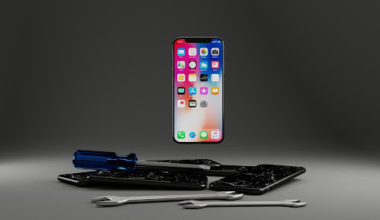Strategic sourcing is an interaction that commonly affects all aspects of a business. It includes inward cooperation with partners and providers, just as basic examination of spend, and provider hazard management. It empowers you to distinguish supply chances and foster an arrangement to alleviate them. With a worked on strategic sourcing measure, you can adjust purchasing capacity to the general incentive and construct a different stockpile base. Likewise, you can decide approaches to lessen store network costs and oversee supply hazards. Along these lines, it becomes essential for you to work on the strategic sourcing measure. Also, to assist you with setting up a decent strategic sourcing strategy and receive rewards of the strategic sourcing measure, the specialists at Spend Edge have featured the key advances associated with working on the strategic sourcing measure.
Stage 1: Distinguish spend regions
Recognizing spend regions is a vital stage in working on the strategic sourcing measure. This is done at President, CFO, or CPO level and includes choosing spaces of spend that could deliver cost decreases or interaction enhancements. Basic to this progression is focusing on the different spend regions dependent on the destinations of the company. Gather information about your company, dissect the information, and assemble the system you’ll have to partition the whole inventory network into different classifications. This will help you in classifying spend and getting where the spend is occurring.
Stage 2: Perform supply market investigation
Start your provider statistical surveying to discover important providers and distinguish the ones that can be useful for your association. The interaction includes provider market examination, request investigation, provider choices, and category hazard investigation. Gather information for the provider base that can supply various classifications. Go past your current clients and merge provider information. Examine the spend in various classifications and contrast your spend with the provider income. This will assist you with seeing how significant you can be to the provider. Then, lead provider meetings to choose providers. Send RFI to likely providers and contrast it and costs you are paying to your present providers. This will assist you with understanding whether its insightful enough to proceed with current providers or not. Finish the progression by playing out a category hazard appraisal to decide whether new providers merit the danger or not.
Stage 3: Break down your current sourcing measure
Draw in with partners to acquire detailed bits of knowledge in regards to items utilized by providers. Know why they are utilizing sure items contrasted with less expensive other options and discover approaches to reduce expenses without involving the quality. Distinguish comparative or elective parts to benchmark against your present ones and make the strategic sourcing measure effective. Think about possible providers in contrast to the current one and ascertain the secret expenses related with new providers. Regardless of whether you don’t plan to source from abroad, benchmark providers and items on the worldwide level so you can have a worldwide perspective.
Stage 4: Create a strategic sourcing methodology
Once you have a reasonable thought of spending regions and supply markets, foster a hearty methodology to decide approaches to limit expenses and dangers. However, before that, comprehend current providers’ capacities and the future necessities for the product or administration from the specialty units. This will assist you with recognizing and building timetables and achievements as a guide to achieving the goals. Moreover, such techniques will arrange the most ideal arrangement with providers you decide for the association.
Stage 5: Provider choice interaction
After self-assessing the providers, send a RFI or a RFP to acquire applicable experiences. Characterize your necessities, and detailed inquiries to acquire a far reaching outline of the item, measures nonstop improvement arrangements, and expenses. When you get the survey back from likely providers, foster the provider portfolio and a score. This will help you benchmark scores against your necessities, decide the base score needed by the provider to qualify, and work on the strategic sourcing measure.
Stage 6: Start RFQ interaction
Since, you have shortlisted qualified organizations who have the possibility to address your issues, challenge your current provider by sending a solicitation for citation (RFQ). This will add a component of the contest and assist you with getting the best worth as far as cost reserve funds. Plan archives for every seller, incorporate a depiction of your company, the undertaking, and foundation data and join agreements to be followed while making a bid. This will assist you with spending less time in exchange, keep the interaction straightforward and sign agreements at the best costs.
Stage 7: Keep up with provider connections
Likely this is quite possibly the most overlooked aspect of the strategic sourcing measure. Organizations neglect to acquire generous worth from their sellers in the wake of going through a particularly relentless course of merchant determination. Setting up a compelling provider relationship management program will empower you to acknowledge investment funds and enhancements that were designated during the early Tendering Services measure. Execute groundbreaking thoughts or cycles, foster ceaseless improvement cost drivers with the chosen supplier(s), and refine the score cards to make all the difference for the energy.











